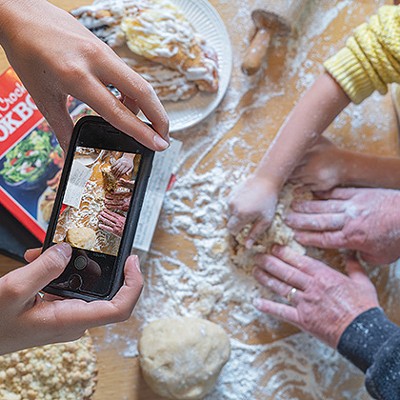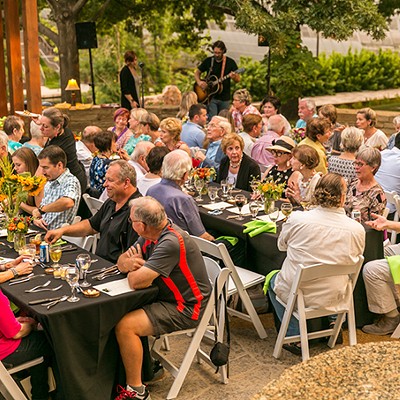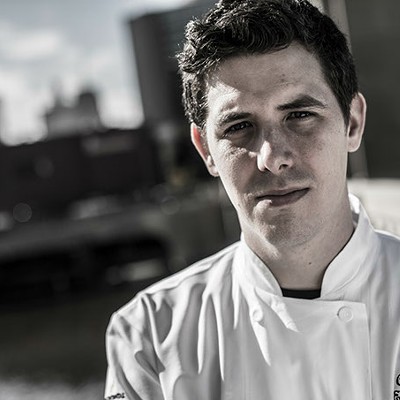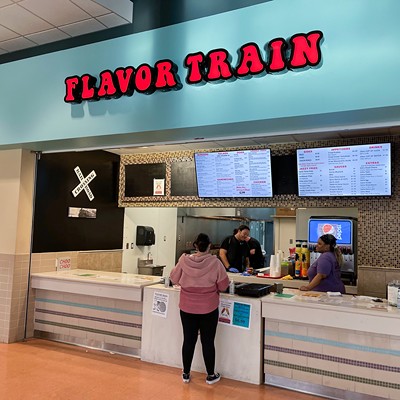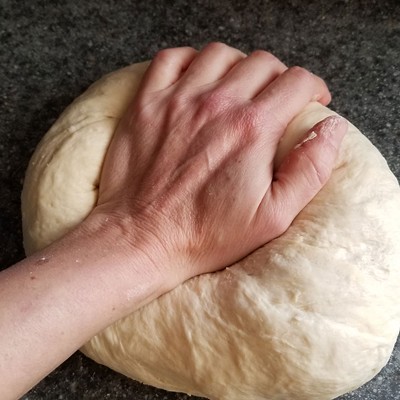Tastes, aromas and textures of food excite anyone who loves to cook, but it’s the recipe that makes food taste as good at home as it does in a restaurant. It’s all in the magic of combining flavors.
A recipe is just a moment in time. Foolproof recipes often give creative gratification to cooks with a sense of immediate accomplishment, hosting holiday parties without hassle. Often, those formulas, an integral part of every kitchen, get handed down from generations of good off-the-cuff cooks from family members, and they are treasured like jewelry for the kitchen. Cherished family recipes are a bit of history, and they can make a meal a feast.
To some chefs, certain recipes can seem as old-fashioned as tailfins on a pink Cadillac. That is certainly true for fantastic Chicago chef Grant Achatz of Alinea, who turns out anything but traditional dishes, like a kabob presented on a branch of burning oak leaves. In Michelin’s first Chicago guide, Alinea was awarded three stars, something that only 93 restaurants in the world have ever achieved.
At Alinea, which has no signage outside, all of the dishes are done with such precision. In fact, they are plated with tweezers. Among the 23 or more courses, guests might be presented with an inflated plastic bag wrapped in a linen pillowcase. The diners then pop the bag with a needle to release the perfume of very fragrant tea. What would James Beard have said?
Traditional recipes may have been popping up in cookbooks for years, but that doesn’t mean at-home cooks can’t tweak them. I just don’t understand people who try a recipe once that somehow did not meet their expectations and then won’t ever go near it again. Hold on! There are variations of recipes in every category. What a shame to cut yourself off from something that could be changed with a little twist — a subtle surprise element.
Of course, there are variations in recipes. That’s exactly why there are pizza places on every corner in the metro, with each doing their own thing.
Ned Shadid, a caterer in the business for more than 27 years, said the dishes used in his Ned’s Catering come from old family recipes and also from employees, both former and present.
“We’ve had several talented chefs
over the years and have picked up several recipes from each. They came from Mark Ward, James Jackson, Marcus Johnson, and the dinner roll that we use was Sherry McCauley’s. She was a longtime cook and baker who was with us for more than 25 years,” Shadid said.
“We do lots of testing before we add it to our menu,” he said.
Where do recipes come from?
Everywhere. Old cookbooks, the library, magazines and, of course, they pop out of television shows and simply pour out of the Internet. But what works, what can’t and exactly why is another story.
A chef is somewhat of an explorer or an editor of a newspaper or magazine. He or she edits what is available, searching out the best ingredients, then looking through his or her own ideas for recipes, even going to other chefs and valued customers for ideas.
At the Museum Café, 415 Couch, Executive Chef Gayland Toriello said he is always looking out for good recipes. He even goes online, gets a recipe that looks good and then does a fair amount of testing.
Toriello was a chef at the Skirvin Hilton Hotel, 1 Park Ave., before taking over the kitchen at the Museum Café and likes to recommend his best-selling black lentil salmon with fried parsnips.
“Our menu is seasonal, and we plan to change it within a week or two. We are always looking at Frenchinspired recipes,” Toriello said.
Cooking rules are rigid, and if you hate to cook, it is always nice to know that you are not alone. Yet traditional recipes have been passed down through generations for a reason. Don’t be afraid to try them out and add your own twist.
Original
recipe
Someone once whispered to me behind a white napkin held over her
mouth that she had gone to a highdollar restaurant in New York City
and, to her, a miracle had happened: “The chef gave me all of his
recipes,” she swooned.
“Hmm,” I thought. “Just try and work them out.”
Sure,
she could have organized the shopping by getting all of the required
ingredients together, and she certainly could have done the prep work
that involved the peeling and the chopping. But it takes more than that to recreate these restaurant recipes.
Here
are a few questions I would have loved to throw back at her: Could she
have worked out those recipes without previous culinary training,
without understanding the correct cooking techniques of grilling,
frying, roasting and baking planted in the back of her brain? Could she
have mastered them without the correct equipment in her own home kitchen
such as a convection oven, or a restaurant stovetop that gets much
hotter than the range in her own kitchen?
Would she know when to stop whipping the cream or the concept of a sauté or the difference of combining fresh or dried herbs? Finally, could she produce an entire meal, getting everything to the table at the same time?
As we all have probably discovered, recipes often allow for only the slimmest margin of error. Just look at dealing with the microwave. If something is left in a microwave for a couple of seconds too long, it comes out tasting like a cardboard box.
—Carol Smaglinski

